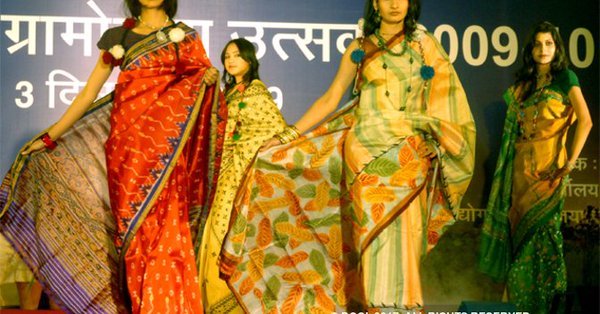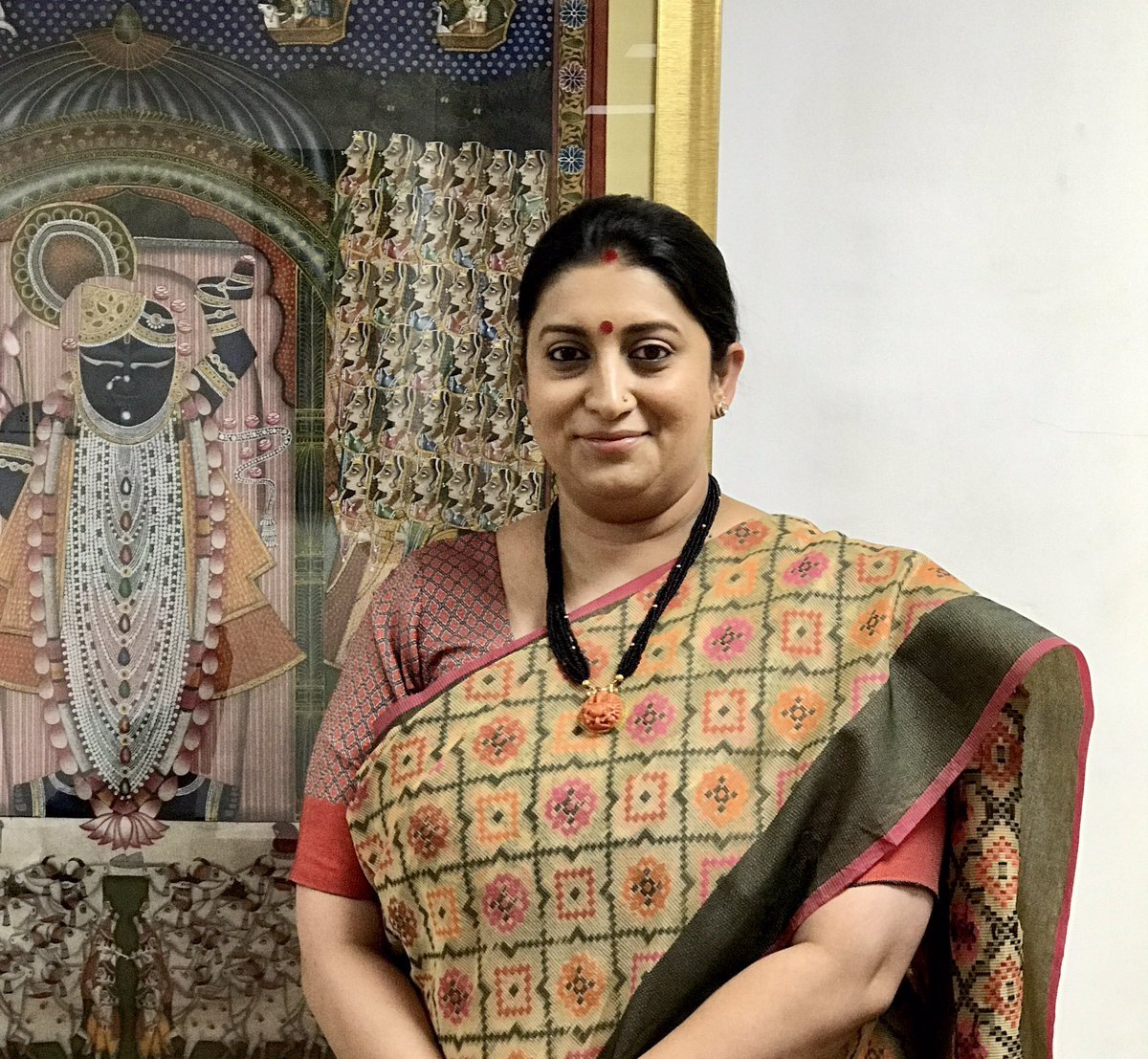The nine-yard beauty is something all Indian women adore. Sari is fun, sari is beautifully messy, saree is sexy and much more.

But when did sari become a symbol of Hindu nationalism? How is donning a traditional Indian attire aligned to promoting a certain religion? And just how is, say for instance, a Benarsi saree a marker of Hinduism?
Well, The New York Times certainly seems to think so. On November 12, NYT published an elaborate article: In India, Fashion Has Become a Nationalist Cause, finding a conspiracy in the humble saree and viewing it through a communal lens.
Wearing Saree is communal, so dear Indian ladies if you want to be secular wear jeans, skirts, minis etc as per @nytimes https://t.co/xWJTklrqfP
— Avinash (@avinashbhat01) November 13, 2017
Basically, author Asgar Qadri claims that after BJP came into power in 2014, it has been deliberately reviving the textile industry and transforming the Indian fashion scene just to push its right-wing nationalism.
Sample a few lines from the article:
“Since the Bharatiya Janata Party formed a national government in 2014, the Indian fashion industry has been pressed to aggressively promote traditional attire and bypass Western styles. The effort aligns with the party’s broader political program: to project multi-faith India, a country of more than 1.3 billion, as a Hindu nation.”
The author then digresses completely and refers to murder of journalist Gauri Lankesh. He says that critics of PM Modi are “branded as “anti-national,” some shot and killed by Hindu nationalist activists.”
Well, is there any evidence of that, Mr Qadri? How can you conclusively state this without any proof?
Let us present a few other gems from the article:
“There is a clear connection between the rising Hindu nationalism and the aesthetic production of leading Indian fashion designers and the country’s luxury industry at large”
The article claims how Modi’s ‘Make in India’ campaign is just to restore Indian-ness in Indian fashion. Strangely, the article does acknowledge that the revival of the Varanasi sari is helping its weavers who are predominantly Muslims but insists that they continue to be poor while the merchants are making money.
Sample this:
“During his campaign, Mr. Modi had promised to revive the tradition of the Banarasi sari and to help its weavers, a significant percentage of the constituency’s electorate. The weavers, who are mostly Muslim and following a family trade, largely live in poverty…As soon as we reached what looked like a community center, about 50 men, old and young, gathered around. A few told their stories on behalf of the group: Nothing had changed for them…But Mr. Modi’s call to revive the Banarasi sari certainly has benefited the merchants in the city, who employ the weavers.”
Sad to see a publication like @nytimes declare the Banarasi sari is worn ‘primarily by Hindu women’. Saris were popular in Pakistan, until declared ‘unIslamic’ by Zia. Bangladeshi women still proudly wear but u’ll see them in Dhakais not Banarasis, matter of taste & affordability
— rashmibansal (@rashmibansal) November 13, 2017
Simply shocked that @nytimes now thinks that wearing our tradition clothes is some sort of bigotry. Next up – eating Dosa, biryani or chaat instead of hotdogs is unacceptable. Sickening attack on our way of life:https://t.co/pkw9CiUqQ7
— Sanjeev Sanyal (@sanjeevsanyal) November 14, 2017
There’s more:
”Mr. Modi has made traditional dress a priority and, as many in the country want to please him, the fashion industry has followed along.”
What’s wrong in designers promoting and experimenting with traditional Indian clothing styles? In fact, it will take our styles to global heights and at the same time benefit our weavers the most. Is that why the author is afraid that the Indian fabric is giving a tough competition to Western textile?
Clothes, women’s clothes especially, have always had political overtones. They’ve often been used as tools of Empire, of patriarchy, of capitalism.
NYT saree comments sound like worry about Western polyester sales potentially declining in India though: https://t.co/JwbbFbpg88— Nandita Saikia (@nsaikia) November 14, 2017
The author then conveniently states how Smriti Irani, the country’s textile minister is now in charge of Indianizing fashion, just because she wears sarees and how she was a soap opera star before.
The author curiously notes that “Ms. Irani’s saris have become popular fashion statements.” Well, really? When was the last time Irani’s dressing sense made it to the press?

There are no absolutely no facts presented by the author to substantiate his claims. The whole article just feels like a long rant devoid of a strong argument.
Indian women wear sari as a symbol of elegance and pride, not to flaunt their nationalism. We don’t need such markers, dear author.
Twitter lashed at the publication for such a poorly researched article and gave the author a piece of their mind:
Simply shocked that @nytimes now thinks that wearing our tradition clothes is some sort of bigotry. Next up – eating Dosa, biryani or chaat instead of hotdogs is unacceptable. Sickening attack on our way of life:https://t.co/pkw9CiUqQ7
— Sanjeev Sanyal (@sanjeevsanyal) November 14, 2017
Only the @nytimes could have come up with something so grotesquely untrue. To even suggest that the ‘sari’ is a symbol of ‘Hindu nationalism’ is a caricature of the truth. This is not ignorance; this is deliberate distortion. https://t.co/iO1zpXiZg8
— Kanchan Gupta (@KanchanGupta) November 13, 2017
What does the @nytimes think Indians wore before 2014? Seriously ridiculous piece. https://t.co/CUSCTBPRNK
— Suhasini Haidar (@suhasinih) November 14, 2017
Sonia Gandhi wears lovely saris. AFAIK, she is not a BJP supporter
In India, Fashion Has Become a Nationalist Cause https://t.co/eklqE1emUf— Harini Calamur (@calamur) November 13, 2017
Dear @nytimes: Fine to criticize Modi govt., but conflating textile promotion w/ Hindu nationalism is preposterous. https://t.co/HGDe1oEZBl
— Sadanand Dhume (@dhume) November 14, 2017
Bad article @nytimes
1)Indian attire has always been fav of designers2)Clothing is a personal choice – Modi in Kurta or MMS in safari suit.3)Wrong choice of example, Sitharaman has a wider array of handloom sarees than Irani https://t.co/lRJrT2epsa— Shreya Jai (@shreya_jai) November 14, 2017
Let me tell, #Saree is my #pride #culture #grace n #confidence. No one never forced me to drape it. This is my choice when n where to drape a #Saree or even drape or not. Don’t equate it with #Abaya
https://t.co/px6rM2phiA— Meenakshi Dikshit (@mymeenakshi) November 14, 2017
What does the @nytimes think Indians wore before 2014? Seriously ridiculous piece. https://t.co/CUSCTBPRNK
— Suhasini Haidar (@suhasinih) November 14, 2017
This article is a classic example of religious bigotry meeting racist bigotry. There is no other polite way to describe it: https://t.co/w71LZkJ2ZG
— Akhilesh Mishra (@amishra77) November 14, 2017
Before 2014, no man wore a Kurta and no woman a saree? Because this ‘fashion aesthetic’ is apparently part of ‘pol program of Hindu nationalism’ https://t.co/BUMwSZWXss
— Padmaja joshi (@PadmajaJoshi) November 14, 2017
,
.

















